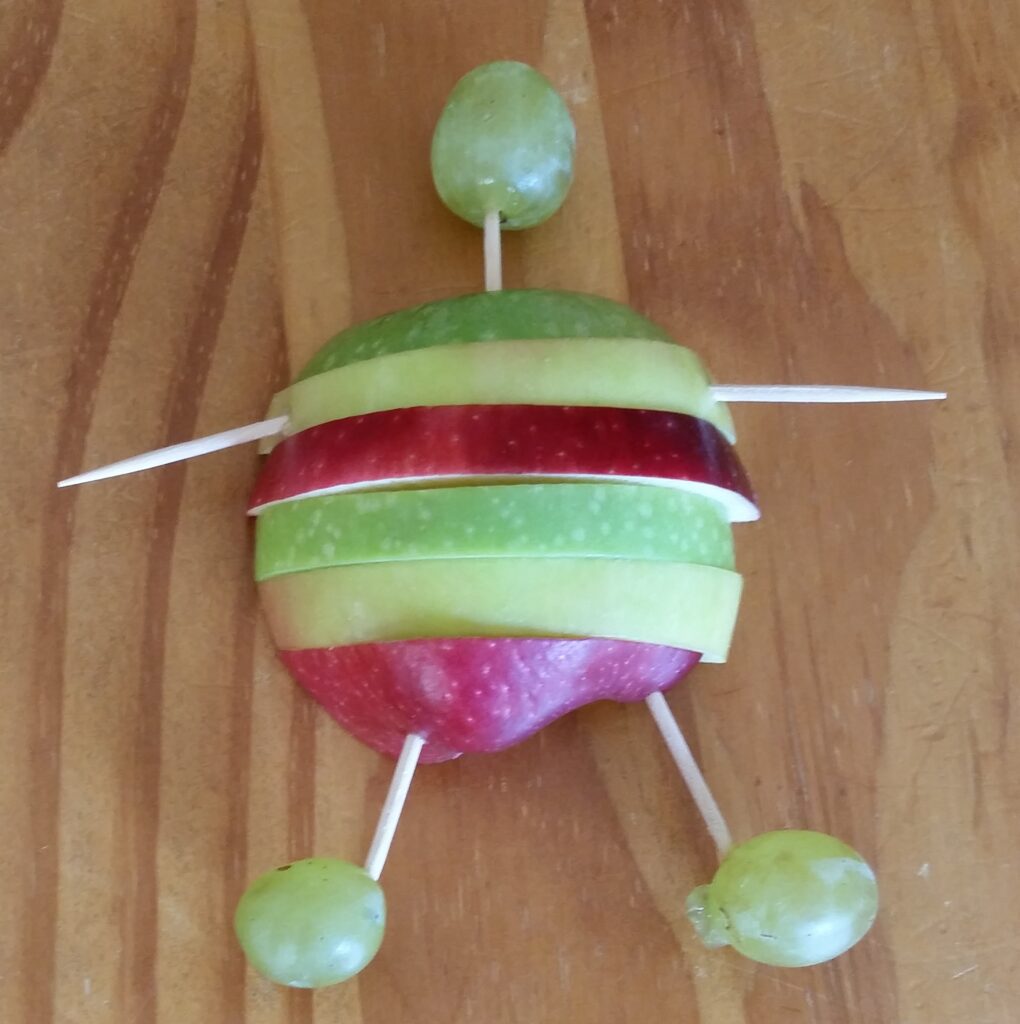| And Ya’akov (Jacob) lived in the land where his ancestors had lived, in the land of Canaan. | Vayayshev Ya’akov be’eretz megurei aviv be’eretz kna’an | וַיֵּשֶׁב יַעֲקֹב בְּאֶרֶץ מְגוּרֵי אָבִיו בְּאֶרֶץ כְּנָעַן׃ |
Torah Thoughts
Parashat Vayeyshev holds a special place in my heart; the apple-and-grape Joseph was my first Parsha Nosh. My children were small, and I was really worried they and the others in the class would think the idea stupid. Instead, they loved it! The delight in their little faces so encouraged me… and here we are!
Vayeyshev is a very fraught parsha for anyone who has ever been either a parent or a sibling… so basically almost everyone reading this. Reading about a parent clearly favoring one child over others, the jealousy it causes, and what results, evokes very personal emotions from us all. “How could you cause all this to happen?” we want to ask Jacob. “Don’t you know you were hurting everyone?”
Rabbi Mandel, of Chabad Fort Worth, provided an interesting perspective, if I recall it correctly. He pointed out that Joseph was the only one of the children who had no mother. All of the others had a mother to love and care for them. Jacob had to make up for this loss; regardless of WHO the mother was.
This thought did, indeed, put things in a different perspective for me. No, I have no conclusion about what would have been the right way to handle it; we all know that parenting is full of mistakes and we make our best efforts. But every parent knows we TRY to treat our children equally and favor no one, but children don’t come to us equal. Some have special talents that are more visible, making them the center of attention for the world. Should we make up for that, or pretend it isn’t happening? Some are especially beautiful. Some have special needs demanding a disproportionate share of our time, attention, and resources. Sometimes children share one parent but not the other (even post-polygamy there is such a thing as divorce and widowhood), making things still more complicated. Maybe one of the children lives with you, while the other does not.
It is easy to be outraged by the inequality. But navigating parenthood is difficult, and Jacob struggled no less than we do. The Torah can teach us HOW to behave. It can also show us that our struggles are not new.





